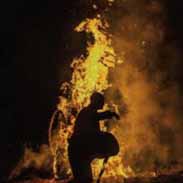Breaths Per Minute Flashcards, test questions and answers
Discover flashcards, test exam answers, and assignments to help you learn more about Breaths Per Minute and other subjects. Don’t miss the chance to use them for more effective college education. Use our database of questions and answers on Breaths Per Minute and get quick solutions for your test.
What is Breaths Per Minute?
Breaths per minute (BPM) is a measurement of how many breaths a person takes in one minute. BPM is used to measure the rate at which oxygen is being delivered to the body, and it can provide important information about an individual’s overall health and wellbeing. BPM can also be useful for determining if someone has an underlying medical condition or if they are having difficulty breathing due to environmental factors like air pollution.BPM readings are taken with a respiratory device called a spirometer, which measures the volume of air inhaled and exhaled in each breath. A normal BPM range is between 12-20 breaths per minute, although some people may have higher or lower readings depending on their age, activity level and other factors. Some medical conditions such as asthma can cause people to take more breaths than usual; however, this should be monitored by a healthcare professional and not taken as an indicator of ill health on its own.When measuring BPM it is important that you remain calm and relaxed. This will ensure that your reading is accurate and does not become skewed by stress or anxiety levels. It’s also important to note that children typically have faster BPMs than adults do, so it’s best to compare readings against what is considered normal for their age group when possible. There are several ways that you can use BPM measurements to your advantage in order to improve your overall health and well-being: – Monitoring heart rate variability: Measuring changes in your breathing pattern over time can help you identify patterns related to stress levels or emotions; this knowledge can then be used proactively in order to manage these states before they become overwhelming or lead to physical or mental illness – Practicing deep breathing exercises: Taking slow, deep breaths has been shown to reduce stress levels while inducing feelings of calmness; regular practice with careful monitoring of your breathing rate can help you maximize the benefits of these exercises – Identifying potential respiratory issues: If your BPM remains consistently elevated even when you are at rest, this could indicate an underlying problem such as asthma or chronic obstructive pulmonary disease (COPD).














